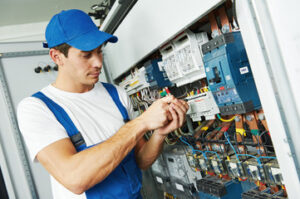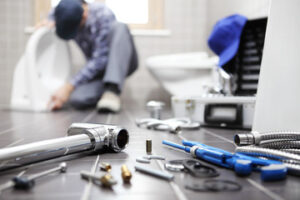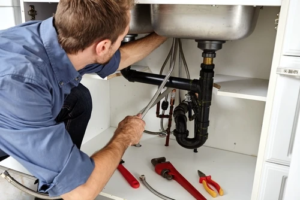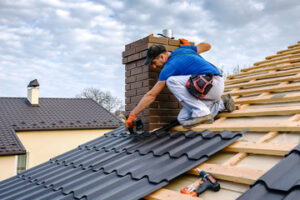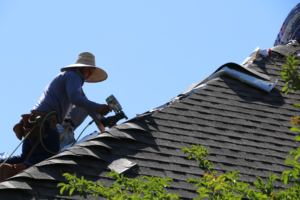Body butter are thick, occlusive moisturizer packed with good-for-you oils and deeply hydrating ingredients. They’re ideal for dry skin or in the colder months.

Body butter is packed with skin-loving oils and shea butter, known to deeply moisturize the skin and replace natural oil lost due to dryness. It is also hydrating, so it helps to restore the natural barrier that protects the skin from harsh weather conditions and environmental stressors. This intense hydration helps to prevent dryness and flakiness, leaving the skin feeling smooth, soft, and nourished. Visit Website to learn more.
As such, body butter is a great solution for those who have sensitive skin because it is often free of harsh ingredients and fragrances that can cause irritation. However, if you have very sensitive skin, it is important to patch test body butter before using it regularly. It is also a good idea to apply body butter in moderation, as too much can cause clogged pores, which can lead to breakouts. Additionally, if you’re making your own body butter, consider choosing a recipe that includes jojoba or sunflower oil. These oils are gentle, non-comedogenic, and help to prevent clogged pores.
When it comes to applying body butter, the best time is immediately after showering when the skin is still damp. This helps seal in the moisture and allows for the body butter to penetrate deeper into the skin. Additionally, it is important to regularly moisturize dry and rough areas of the skin such as the elbows, knees, and hands.
Lastly, applying body butter to the skin before going to sleep can provide an overnight miracle! This will give the body butter time to penetrate the skin deeply and repair any dryness or cracks. This will leave the skin feeling hydrated, nourished, and supple in the morning.
When purchasing body butter, look for one that is free of artificial colors, phthalates, and parabens. It is also a good idea to read the label and choose one that is made with natural, skin-friendly ingredients such as shea butter, coconut oil, essential or fragrance oils, and powdered colorants such as micas. For a whipped body butter, it is also important to add a stabilizer such as arrowroot to keep the whipped butter from “falling” or losing its light and airy texture.
Nourishes
Body butter is richer than body lotion and contains a higher concentration of nourishing and moisturizing ingredients. It provides intense hydration and prevents transepidermal water loss by forming a thick barrier on the skin. This makes it a perfect choice for dry and very dry skin types. It also nourishes the skin by delivering essential vitamins and minerals that are often lost through regular washing. In addition, it can help reduce stretch marks, fine lines and dark circles.
A rich body butter is a must-have for pregnant women, as it can help promote elasticity and prevent stretching of the skin during pregnancy. It can also help improve the appearance of scars and stretch marks after giving birth. In fact, almost any skin issue can be remedied with a well-formulated body butter!
When choosing a body butter, look for one that is formulated with shea butter, cocoa butter, coconut oil and aloe vera. This combination of nutrients will ensure that your skin is nourished and protected at all times, regardless of the season.
Some body butters may also contain other beneficial ingredients like vitamin E, jojoba oil or avocado oil. These can help nourish the skin by delivering essential fatty acids, helping balance oil production, and boosting collagen production. It is also important to find a body butter that has a fragrance you enjoy or can be customized with your favorite essential oils. In addition, a good quality body butter should contain a stabilizer to keep it from collapsing after application. Arrowroot powder is a great natural option for this purpose. In order to get the most out of your body butter, it is best to apply it before bed at night so that it can fully hydrate and nourish your skin while you sleep. You can also pair it with a powerful exfoliating scrub before showering to give your skin an even more intensive treatment. For extra pampering, try a body butter that is scented with lavender or other relaxing essential oils. This will help you relax before going to sleep and allow the body butter to work its magic while you rest.
Prevents Dryness
When you have dry skin, it’s important to use a moisturizing product that can deeply penetrate the layers of your skin and lock in luxurious moisture. Body butter can do exactly that. It’s made with natural ingredients like shea, cocoa, and coconut oil that nourish the skin to prevent dryness, and it shields and locks in moisture for supple and smooth skin. It can also help address issues like stretch marks, dullness, dark spots and uneven skin tone.
Using a thick body butter on a daily basis can keep your skin healthy and soft, even during harsh winters. It can also prevent dryness from shaving and waxing and soothe irritated skin after sun exposure or hot baths. In addition, using it regularly can prevent fine lines and wrinkles on the skin and give you a youthful glow.
A good time to apply body butter is right after you get out of the shower or bath. Pat your skin until it’s damp but not dripping wet. Scoop out a pea-sized amount of body butter with your fingers and warm it up between your palms so that it spreads easily. You can then massage it all over your body, paying special attention to any areas that are particularly dry.
The outer layer of your skin soaks up moisture while you bathe, but it slowly evaporates as the day goes by. Applying a thick body butter after your shower or bath helps keep the moisture in, especially on areas that lose hydration fast, like knees, elbows, and feet.
You can also use it before going to bed at night to give your skin an overnight treatment. This way, you’ll have hydrated and soft skin when you wake up. The key is to use body butter properly and on a regular basis, and to find a formulation that works for your specific skin needs.
Hydrates
Body Butter is a great moisturizer for dry skin, but it can also be used as a treatment for irritated areas like your hands. Applying the butter while your skin is still damp from a shower can help seal in moisture and hydrate the area. When applied daily, the rich nutrients in body butter will improve skin texture and make it healthier-looking. It is also great for hydrating your nails and cuticles.
Body butter is usually thicker than a typical lotion, so it is best to use it after a shower or bath. This helps seal in the moisture and prevents it from absorbing into the skin. When using it, be sure to apply a small amount at a time as the butter can become greasy if you use too much.
After you get out of the shower or bath, dispense a small amount of body butter into your hand and rub it evenly across your skin with your fingers. Pay special attention to dry areas of your body, such as your knees and elbows. You may want to focus extra attention on these areas during winter months when the weather is cold and harsh on your skin.
Typically, body butter is made of shea butter and coconut oil, which have intense moisturizing properties. If you have extremely dry or cracked skin, then using a body butter containing cocoa butter can give you extra protection and nourishment.
Another way to treat dry skin with body butter is to put it on your feet before you go to bed. The natural warmth from your skin will soften the butter and make it easier to smooth onto your skin. Once you have it on, you can slip on a pair of socks to keep the butter sealed in while you sleep for an overnight treatment.
While there are many benefits to using body butter, it is important to find the right product for your specific needs. Consider your skin type, hydration level, and smell preference when selecting a body butter to suit you. It is also a good idea to use body butter that is made with organic ingredients to avoid unnecessary chemicals and preservatives.

